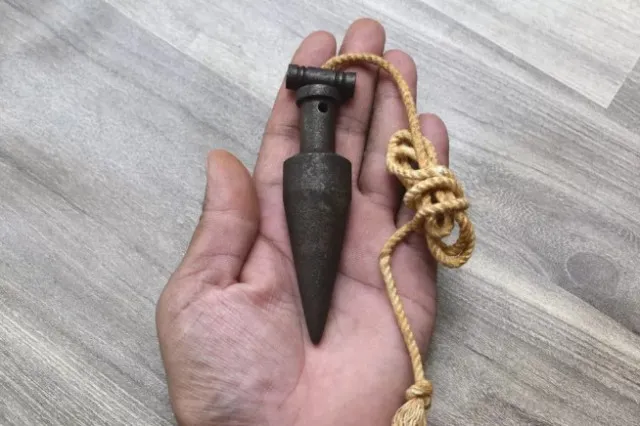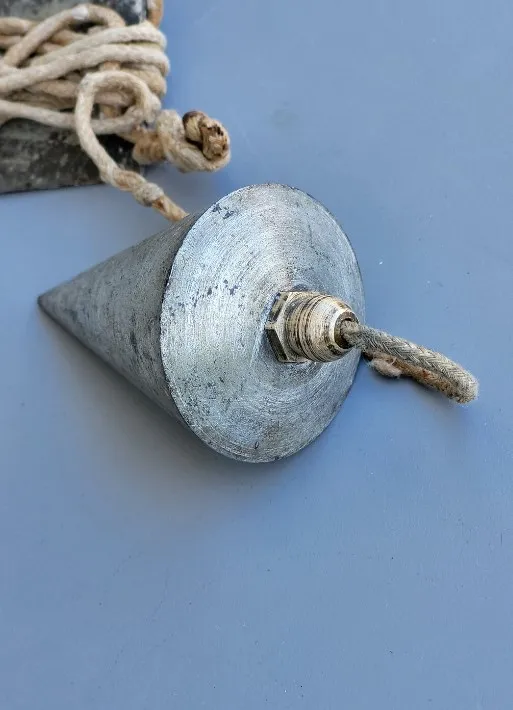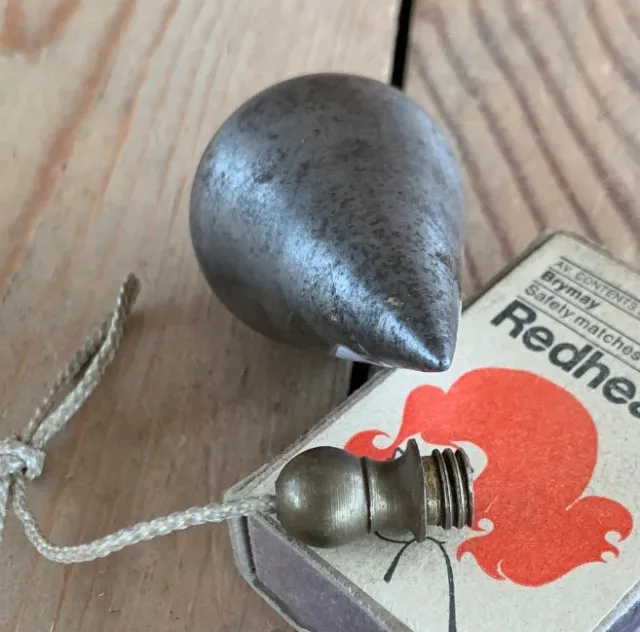The vintage of cast iron plumb bob was used for centuries and holds a significant place in the history of construction.
The cast iron plumb bob with string, often referred to as the vertical level antique plumb bob, is a time-honored tool integral to construction and surveying.
Despite its simple design, this device has significantly impacted the building of some of the world’s most iconic structures.

Historical background
The plumb bob’s origins date back to ancient Egypt and Mesopotamia.
Builders and surveyors used early versions made from stone and bronze to ensure vertical accuracy in their projects.
With the advent of the 19th century, cast iron became the material of choice, offering enhanced durability and precision.

Design and usage
A traditional plumb bob comprises a weight, typically made of cast iron, attached to a string or cord.
When suspended, the weight pulls the string taut, creating a perfectly vertical line, known as a plumb line.
This vertical reference is crucial for ensuring that walls, columns, and other structural elements are correctly aligned.

Legacy and modern relevance
The timeless tool transcends its function, symbolizing the ingenuity and craftsmanship of bygone eras.
While modern advancements like laser levels and digital inclinometers have revolutionized the field.

The plumb bob remains a symbol of precision and reliability in construction.
Collectors and enthusiasts highly value these antique plumb bobs for their historical significance and the artistry involved in their manufacture.
They serve as a tangible link to the past, highlighting the foundational techniques that continue to influence contemporary construction practices.

The vintage tool with string stands as a testament to enduring construction and engineering principles.
Its legacy is not only a nod to historical methods but also a reflection of the timeless quest for accuracy and reliability in building and surveying.